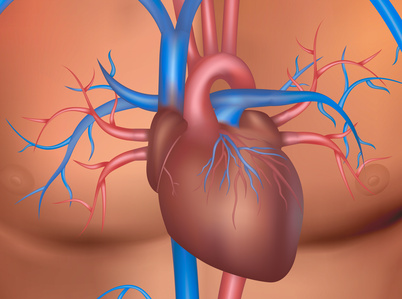According to the STITCH and STITCHES trials, in patients with coronary artery disease and deteriorated left ventricular ejection fraction (EF), revascularization of a viable heart might reverse left ventricular systolic dysfunction.

In these patients, improved EF after coronary revascularization appears to increase long term survival, particularly after cardiac artery bypass grafting (CABG), compared against medical treatment. However, we know little about the impact of improved EF, if it has the benefit of reducing mortality and cardiac failure on its own, or if this is simply the result of reduced CAD morbimortality.
The aim of this study was to assess the link between increased systolic ventricular function (delta EF) associated to revascularization, in patients with PCI and CABG, and cardiovascular events.
This analysis was based on the US veterans database (National Veterans Affairs Patient Care Database) which included patients with deteriorated EF undergoing PCI or CABG, receiving prior and post echocardiography studies. It looked at mortality and hospitalization days for cardiac failure.
It included data from 10071 patients with mean EF 35%, and mean followup of 5 years. When looking at the PCI subgroup, a 5% EF increase was associated to significant reduction, 6% in death (HR 0.94, CI 95% 0.92-0.96) and 10% in hospitalization days for cardiac failure (HR 0.90, CI 95% 0.84-0.95). In the CABG subgroup there were no significant differences in mortality (HR 0.97, CI 95% 0.94-1.01) or hospitalization for cardiac failure (HR 0.95, CI 95% 0.85-1.07).
Read also: Should We Worry about Non-Ischemic Lesions?
Patients with “improved ventricular function” (delta EF >5%) showed lower mortality vs the standard group (HR 0.73, CI 95% 0.66–0.81; P= <0.0001) and fewer hospitalization days for cardiac failure (0.59, CI 95% 0.42–0.83; P=0.0003). This was at the expense of PCI patients.
Conclusion
In this group of revascularized patients, there was modest EF increase, which meant lower mortality and shorter hospitalization for cardiac failure, especially because of PCI, with fewer events in patients with higher delta EF.
These outcomes have the limitations of any observational study. The studies also fail to determine the specific indication for revascularization, which prevents us from drawing conclusions as to the differences observed between PCI and CABG subgroups (which should be taken as hypotheses and looked into in further studies).

Dr. Omar Tupayachi.
Member of the Editorial Board of SOLACI.org.
Original Title: Change in Left Ventricular Ejection Fraction With Coronary Artery Revascularization and Subsequent Risk for Adverse Cardiovascular Outcomes.
Reference: Velagaleti, Raghava S et al. Circulation. Cardiovascular interventions vol. 15,4 (2022): e011284. doi:10.1161/CIRCINTERVENTIONS.121.011284.
Subscribe to our weekly newsletter
Get the latest scientific articles on interventional cardiology





